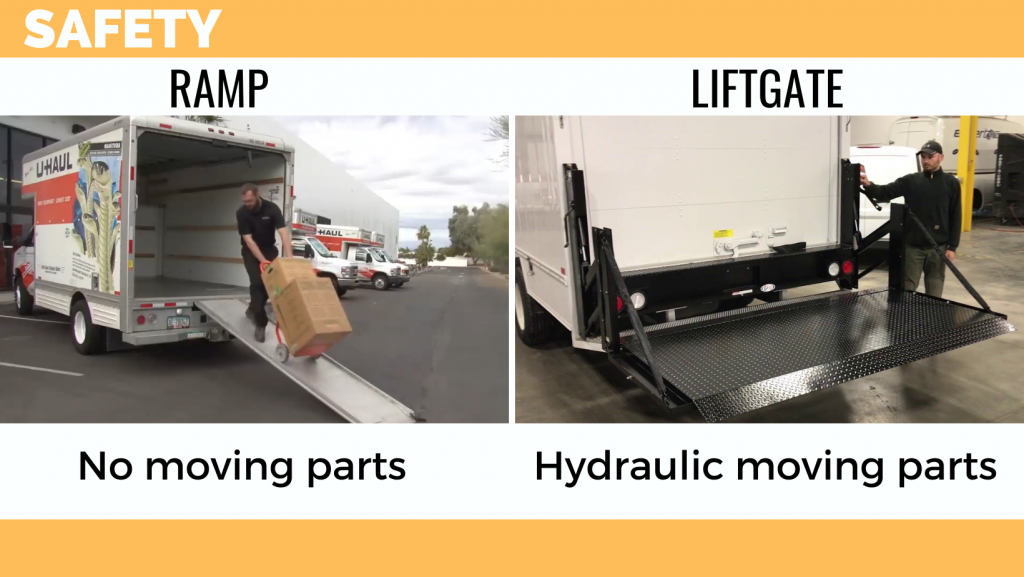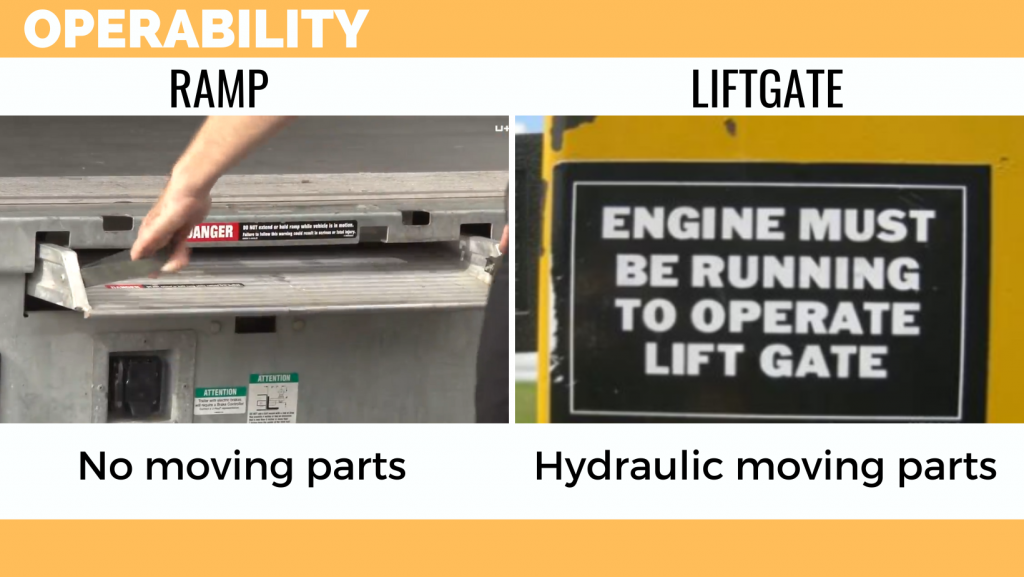It’s the moving struggle — that extremely heavy antique dresser that Aunt Sally insisted you take is sitting in the driveway. The problem is that the dresser is sitting on the driveway and not in the back of the moving truck rental you picked up earlier that day. And it’s just one of the numerous heavy items you have just pulled out of your 4-bedroom house for a cross-country move. How can you get that 300-pound piece of furniture and everything else into the truck? Well, there are a few options.
- Help to lift it in from a friend
- Liftgate
- EZ Load Ramp®
Let’s investigate each option:
- Let’s face it – who wants to risk injury or breaking the antique dresser by lifting something so heavy, even a few feet in the air?
- Options 2 and 3 are your best bets, but they are two different options for a reason.
They both get the job done, so that’s not the issue. It really comes down to a few different items: convenience, safety and operability.
Ramp vs. Liftgate
Convenience
When making your DIY move, you’ll likely be moving from your house, not a loading dock. Liftgates are normally found on vehicles with deck heights of four to five feet in the air; these vehicles’ deck heights are designed to be used in conjunction with a commercial loading dock — not for your residential move. A loading ramp can be deployed anywhere. And some ramps have a very small incline angle, so you can easily walk up it.

Safety: Ramp vs. Liftgate
Loading ramps, like the ones found on U-Haul rental trucks, provide a convenient, easy load option combined with a furniture dolly, Appliance Dolly or utility dolly. A ramp makes the loading and unloading of a truck much quicker.

Operability
Using a liftgate for the first time can be a daunting task. Sure, after some time and experience, it’s easy — but who has the time for practice when they’re trying to move?

For more moving tips, follow us on Facebook, Instagram, X (formerly Twitter), and Pinterest!



